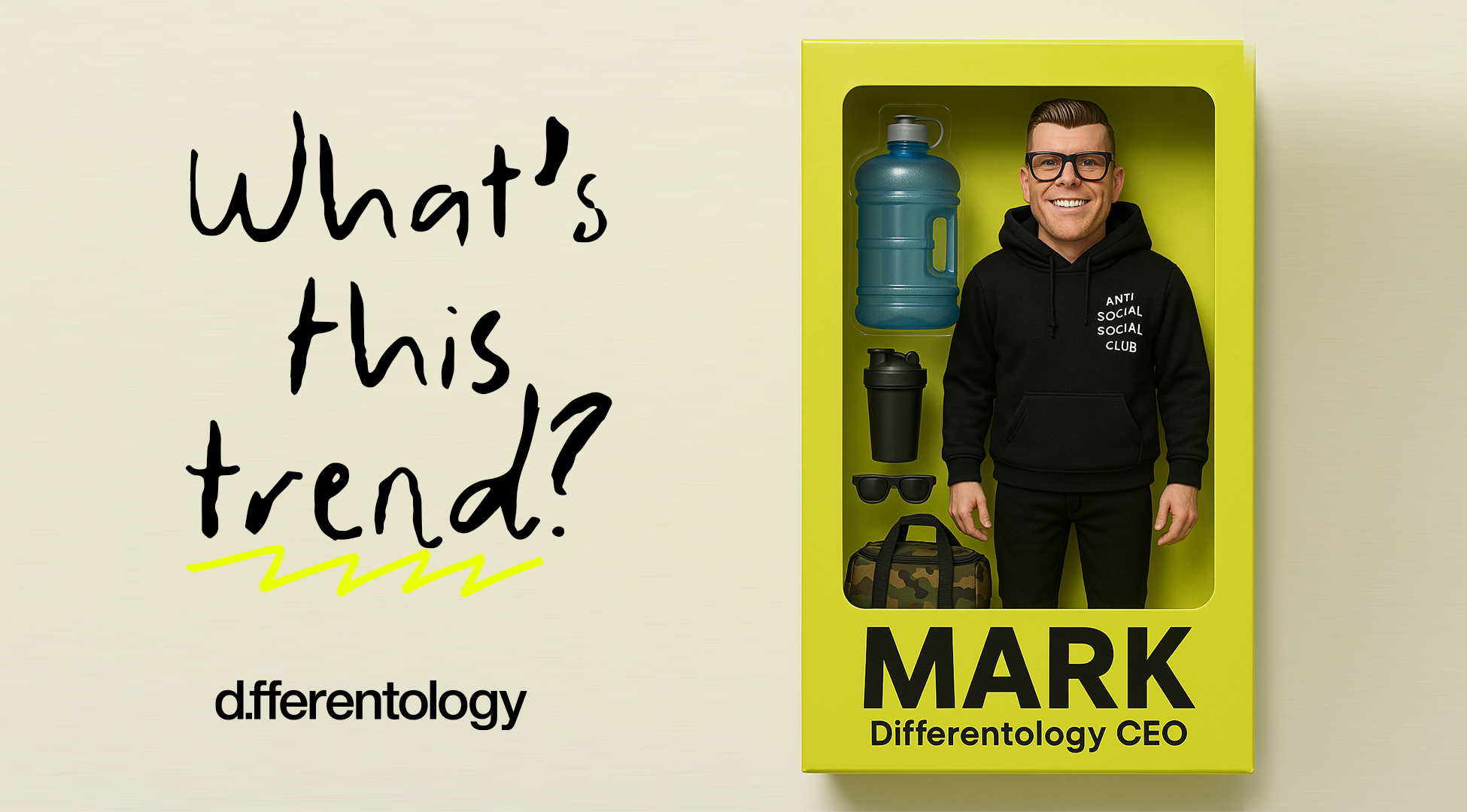Date:
Friday 11th April 2025
Share:
 Recently, AI-generated portraits have taken over our feeds, showing up everywhere from LinkedIn to TikTok. But these aren’t just your average selfies. They’re stylised, boxed self-images, designed like collectible figures or luxury products. Think: you, but packaged, branded, and ready for display.
Recently, AI-generated portraits have taken over our feeds, showing up everywhere from LinkedIn to TikTok. But these aren’t just your average selfies. They’re stylised, boxed self-images, designed like collectible figures or luxury products. Think: you, but packaged, branded, and ready for display.
The looks range from sleek to wild, but the underlying idea is the same: present yourself, not just as a person, but as a ‘concept’.
What’s Behind the Box?
At first glance, these portraits might seem like nothing more than digital vanity projects. But there’s more going on beneath the surface. These boxed images are curated performances of identity, part self-promotion, part play, part social signaling. They’re less about originality, and more about participation: using a shared format to say something, however subtly, about who you are and how you want to be seen.
It’s not groundbreaking self-expression, but it is intentional. The choices: style, colour, accessories, tone, may be made from presets, but selecting from those options still tells a story.
Why They Feel So Good
There’s a certain appeal to seeing yourself rendered like a product. It’s polished, a bit absurd, and strangely satisfying. It’s not just about looking good, it’s about ‘feeling seen’ in a way that’s both familiar and elevated.
And while the process is mostly automated, the result still taps into something real: the desire to control our image, to have a say in how we’re perceived, especially in a digital world where so much of that is out of our hands.
Symbolism in the Packaging
These portraits might follow a formula, but they’re not without meaning. A monochrome background can suggest simplicity or seriousness. A chaotic, neon palette might hint at playfulness or edge. Even when the tools are the same, the outputs still vary and those variations signal intent, even if subtly.
So while it may not be deeply creative, it’s still ‘coded’. It’s not about invention; it’s about recognition and alignment. We’re choosing how to fit into the cultural conversation.
A Digital Ritual of Belonging
As more people jump in, these boxed portraits become more than just a trend, they become a kind of social shorthand. Not just “here’s what I look like,” but “here’s the kind of person I am, or the vibe I’m playing with.”
It’s not about standing out with something completely new. It’s about “fitting in deliberately” making small adjustments within a shared template to say, “I get it. I’m part of this moment too.”
Playing With Identity (Sort Of)
What makes this interesting isn’t how wildly creative it is it’s how aware it is. People know these portraits are artificial. They know it’s a bit silly. But that’s the point. The whole thing operates with a kind of ironic distance: “Yes, this is staged. And yes, I’m in on the joke.”
There’s a quiet power in that self-awareness. It lets people experiment with identity in low stakes ways. It’s not transformation, it’s gesture. A wink, not a statement.
Even LinkedIn’s In On It
Maybe the most surprising part? These portraits showing up on LinkedIn, a platform known for its rigid, professional tone.
This marks a shift. The line between personal and professional image is softening. There’s more room now for personality, aesthetics, and even light self-parody, even in serious spaces. Being professional no longer means being bland.
These portraits say, “I know the rules, but I’m also comfortable bending them.”
Final Thought: When Presentation Becomes the Point
In the end, these AI crafted portraits aren’t about deep creativity or artistic breakthroughs. They’re about how we present ourselves within the systems we’re given. They reflect a culture where identity is performative, where digital presence matters, and where even small aesthetic choices can carry meaning.
Whether your digital box is minimal, maximal, or somewhere in between, the point is less about being original and more about showing up, being seen, and taking part in the moment.
Have you created yours?